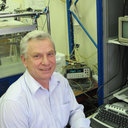Optimizing laser crater enhanced Raman spectroscopy.
Açar sözlər
Mücərrəd
Raman signal enhancement by laser crater production was systematically studied for 785 nm continuous wave laser pumping. Laser craters were produced in L-aspartic acid powder by a nanosecond pulsed solid state neodymium-doped yttrium aluminum garnet laser (532 nm, 8 ns, 1 mJ/pulse), while Raman spectra were then acquired by using a commercial spectrometer with 785 nm laser beam pumping. The Raman signal enhancement effect was studied in terms of the number of ablating pulses used, the lens-to-sample distance, and the crater-center-laser-spot offset. The influence of the experiment parameters on Raman signal enhancement was studied for different powder materials. Maximum Raman signal enhancement reached 11 fold for loose powders but decreased twice for pressed tablets. Raman signal enhancement was demonstrated for several diverse powder materials like gypsum or ammonium nitrate with better results achieved for the samples tending to give narrow and deep craters upon the laser ablation stage. Alternative ways of cavity production (steel needle tapping and hole drilling) were compared with the laser cratering technique in terms of Raman signal enhancement. Drilling was found to give the poorest enhancement of the Raman signal, while both laser ablation and steel needle tapping provided comparable results. Here, we have demonstrated for the first time, to the best of our knowledge, that a Raman signal can be enhanced 10 fold with the aid of simple cavity production by steel needle tapping in rough highly reflective materials. Though laser crater enhancement Raman spectroscopy requires an additional pulsed laser, this technique is more appropriate for automatization compared to the needle tapping approach.


